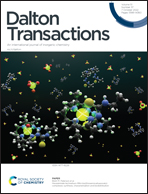FeII spin crossover complexes containing N4O2 donor ligands
Abstract
Spin crossover (SCO) is one of the most studied magnetic bistable phenomena because of its application in the field of multifunctional magnetic materials. FeII complexes in a N6 coordination environment have been the most well-studied in terms of their SCO behaviour. Other coordination environments, notably the N4O2 coordination environment, has also been quite effective in inducing SCO behaviour in the corresponding FeII complexes. This review deals with such systems. The three ligand families that are discussed are: Jager type ligands, hydrazone based ligands and tridentate ligands having salicylaldehyde derivatives. These ligands allow the assembly of both mononuclear and multinuclear complexes that exhibit cooperative spin transitions. Also, FeII complexes obtained from some of these ligands are multifunctional and exhibit a coupling of optical and magnetic properties. Most of the FeII complexes obtained from these families of ligands are charge neutral which allows easy surface deposition. Further, modulation of these ligand families allows a fine tuning of the ligand field strength which results in varying SCO behavior. In addition some of the FeII complexes derived from these ligands exhibit a light induced excited spin state trapping (LIESST) effect. All of the above aspects are reviewed in this review.

- This article is part of the themed collection: 2022 Frontier and Perspective articles


 Please wait while we load your content...
Please wait while we load your content...